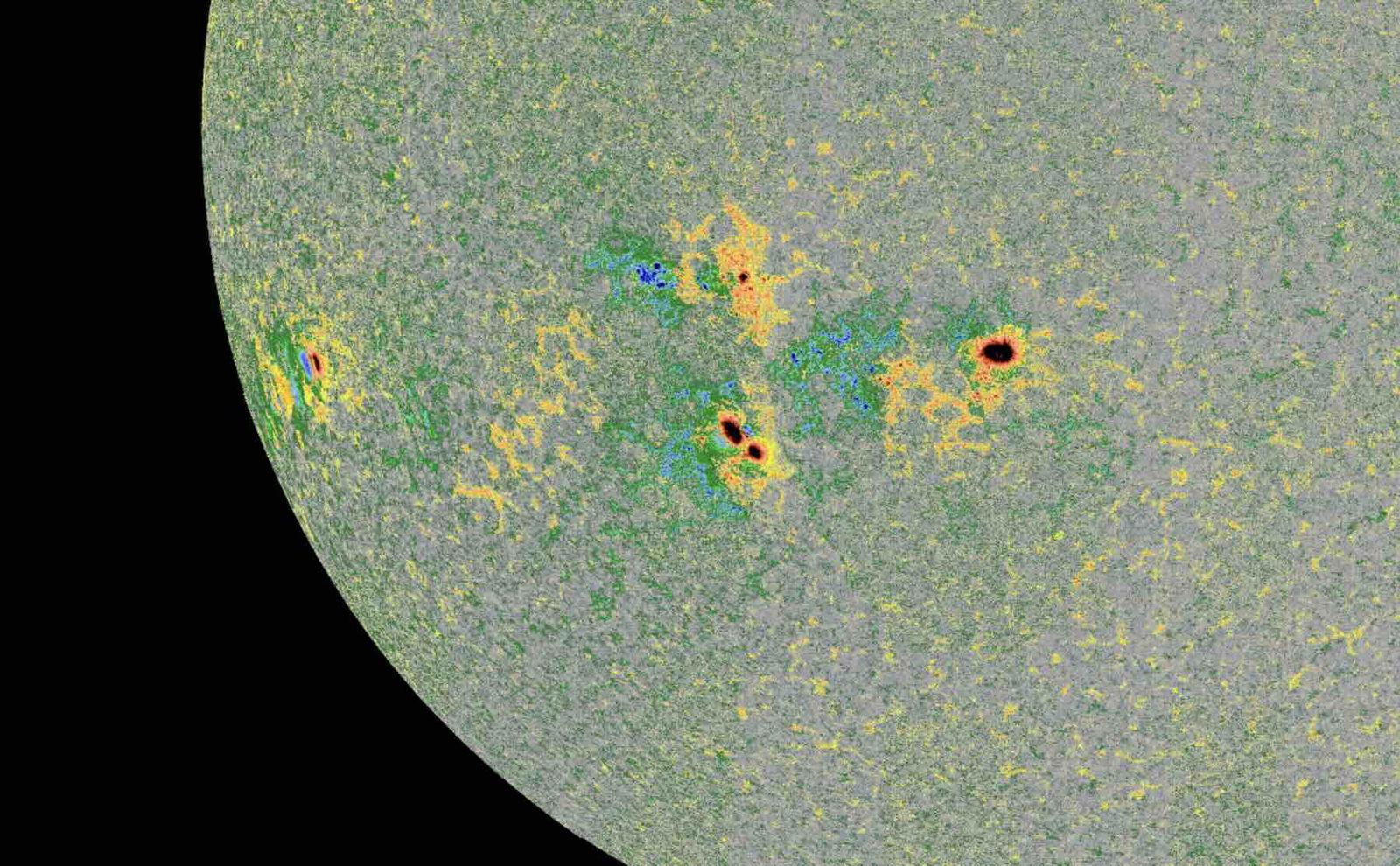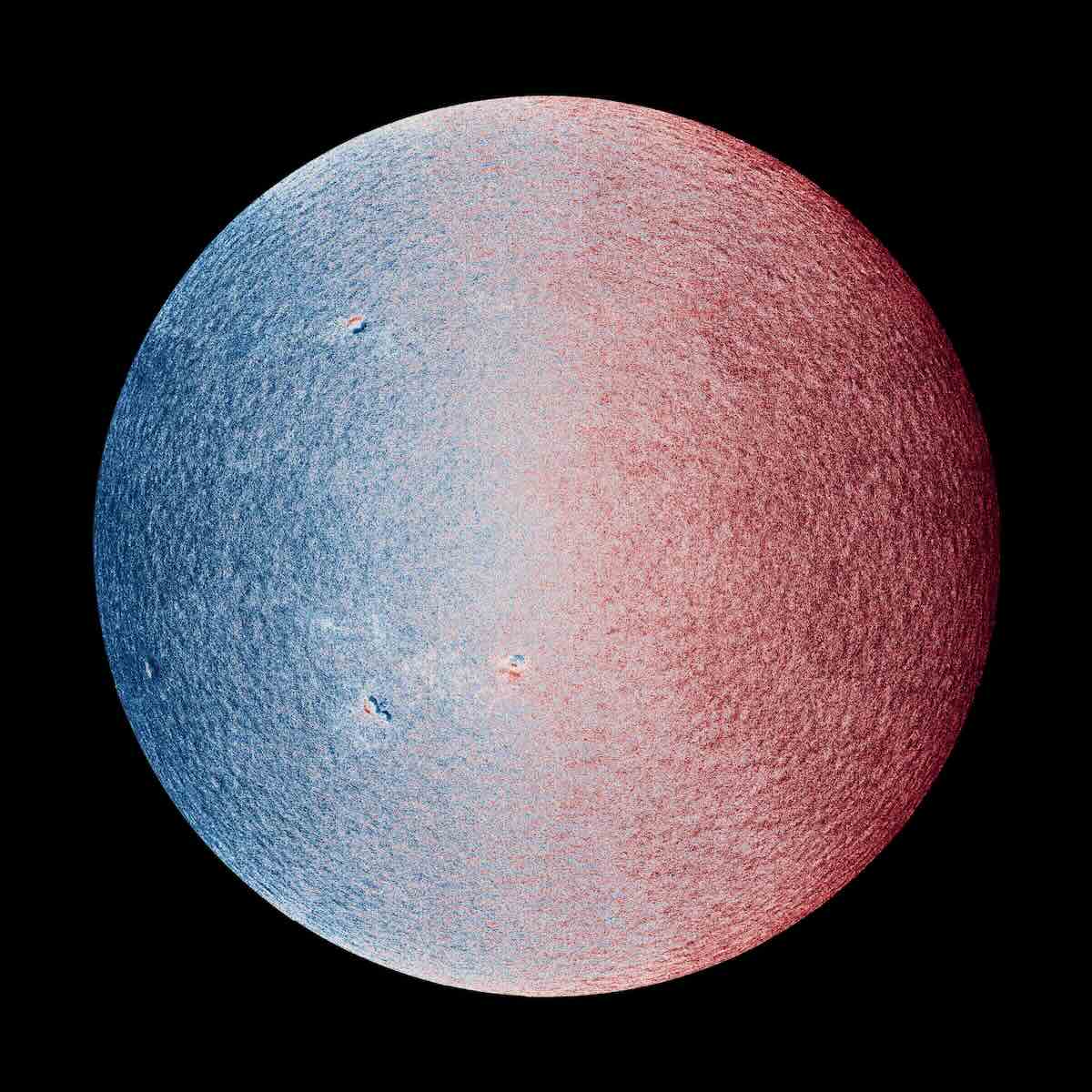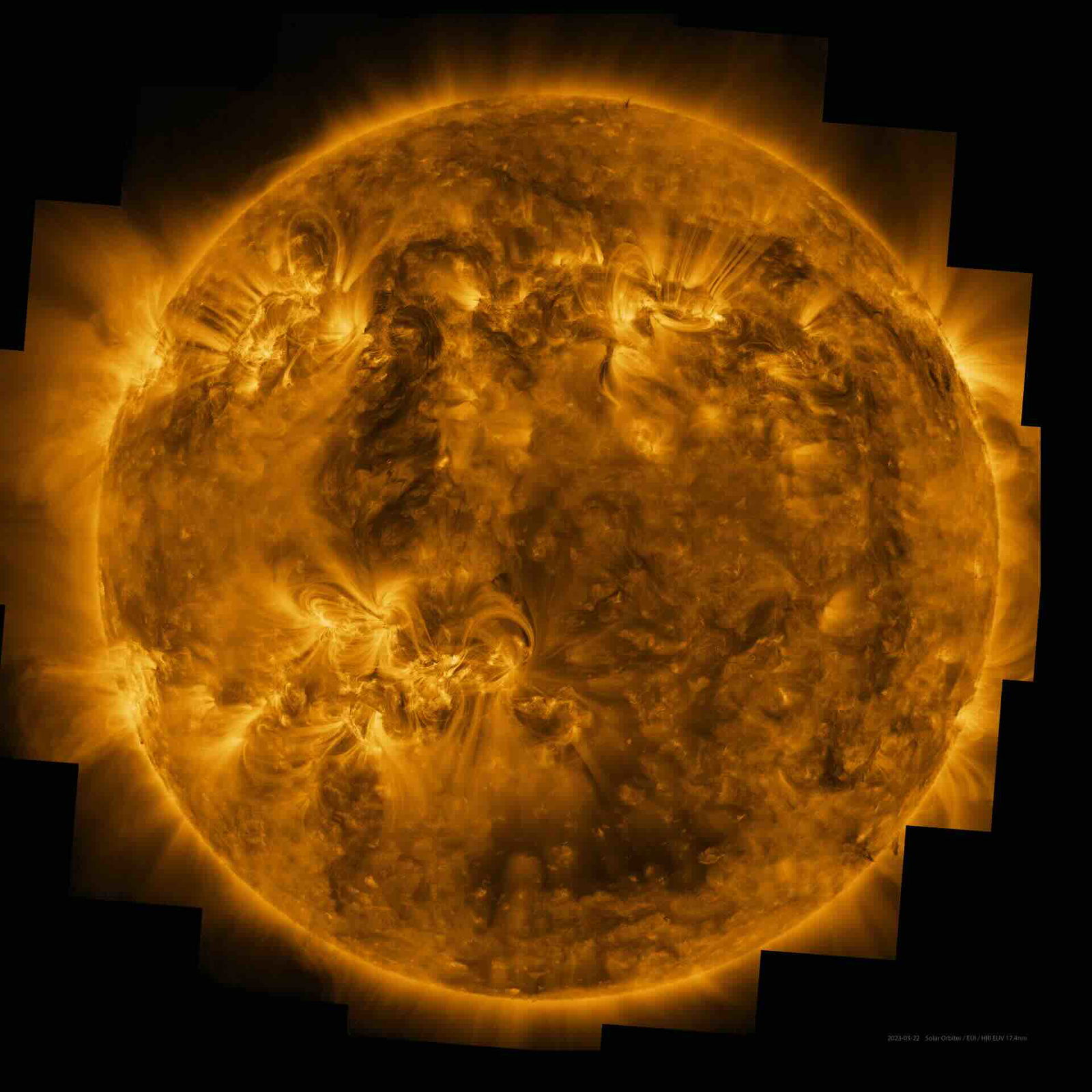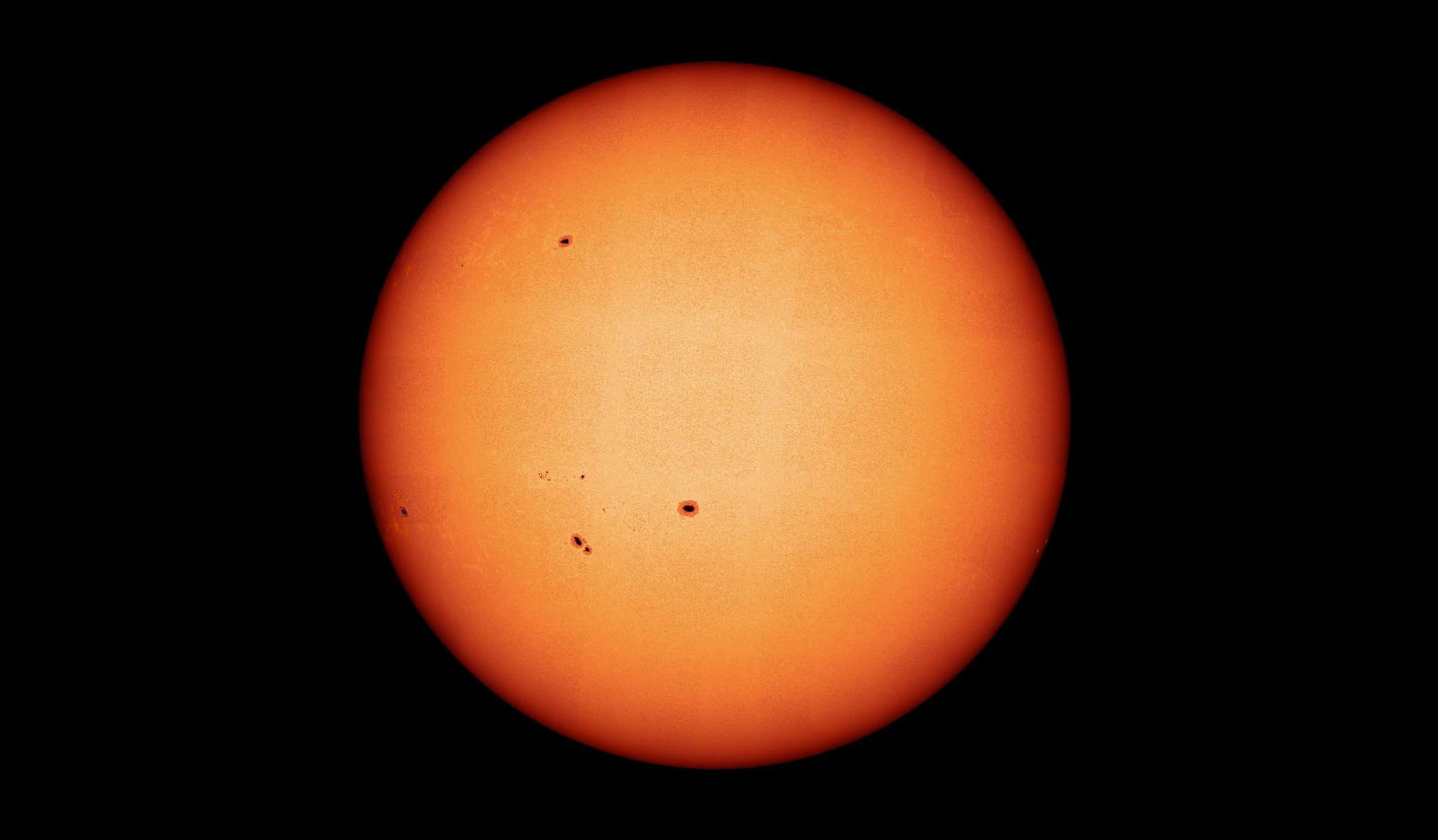A series of enigmatic solar phenomena have been revealed in the most detailed full-disc imagery ever obtained of the Sun’s visible surface, made possible by the European Space Agency’s Solar Orbiter mission.
Revealed in the stunning full Sun images, the mission has obtained unprecedented examples of several solar features that include sunspots, “restless” plasmas, and the movement of magnetic fields across the Sun’s surface.
The striking high-resolution observations were made available by the ESA on its website, offering an interactive view of the complex dynamics underlying solar activity.
Composed of deeply detailed imagery obtained in March 2023 by the Solar Orbiter spacecraft’s Polarimetric and Helioseismic Imager (PHI) and Extreme Ultraviolet Imager (EUI), the ESA calls the new images “the highest-resolution full views of the Sun’s visible surface to date,” which are showcased in new mapping imagery that reveal the “messy magnetic field and movement” visible on the solar surface.


The Solar Orbiter mission was designed to provide unprecedented insights into complex phenomena underlying the Sun’s behavior. With help from the new ESA imagery, many of these features are revealed in new mosaics that showcase magnetic fields and plasma flows, each of which help to shape the Sun’s unique surface and atmosphere.
The Polarimetric and Helioseismic Imager
The Solar Orbiter’s PHI instrument captures the Sun’s photosphere, comprising our star’s visible surface, by imaging it in visible light. This allows for measurement of the directions of the Sun’s magnetic fields, and the recent imagery has helped scientists map the movement, speed, and direction of the motion occurring on its blazing hot surface.
Fundamentally, the new high-resolution maps highlight the Sun’s dynamic activity, while also lending crucial insights into the magnetic forces that influence its corona, which comprises the outermost atmospheric layer of the Sun. Within the PHI images, a turbulent layer of glowing plasma is revealed as the Sun’s vibrant photosphere is shown with a textured appearance, which is caused by the convection of hot material located beneath the Sun’s surface.


Without question, sunspots that appear as dark regions on the Sun’s surface in the new images are among the most striking features the Solar Orbiter’s instruments have revealed.
Cooler than their surroundings due to the influence of intense magnetic fields that suppress the heat convection that occurs there, the sunspots were visualized by the PHI’s special magnetogram, which helped to tease out details that show where the magnetic fields become concentrated around the sunspots.
Meanwhile, the PHI’s velocity map, also known as its tachogram, reveals data on the speed and direction of plasma on the surface of the Sun. In the new images, movement of material towards the Solar Orbiter appears in blue, whereas red regions indicate plasma shifting away from the spacecraft.
Overall, the map shows that while the Sun’s surface plasma generally rotates with the Sun’s spin, sunspots disturb this motion, pushing plasma outward around their peripheries.
Solar Orbiter Imagery in the Ultraviolet
While the PHI instrument works to capture data about the Sun accessible through visible light spectra, the EUI instrument works to capture ultraviolet imagery of the Sun’s corona. The combined data offers a unique, complementary view of a range of different solar features.
“The Sun’s magnetic field is key to understanding the dynamic nature of our home star from the smallest to the largest scales,” said Daniel Müller, the Solar Orbiter’s Project Scientist, while emphasized the importance of these maps for linking surface activity to the hot plasma structures observed in the corona.


Fundamentally, the EUI images of the Sun’s corona offer a unique view of what’s happening above the photosphere, revealing how plasma—heated to millions of degrees, and extending outward along magnetic field lines emerging from active sunspot regions—contributes to the Sun’s magnetic complexity.
Together, the PHI and EUI imagery, obtained from a distance of less than 74 million kilometers, still only reveal a portion of the Sun’s surface. To generate the full-disc mosaics revealed in the recent ESA images, a composite of 25 images per instrument, obtained over a four period, were used.
The resulting mosaics, each close to 8,000 pixels in diameter, provide a level of detail never before seen and represent a significant milestone in solar imagery and related processing techniques. Going forward, the team anticipates the techniques developed throughout this process will be helpful in producing future mosaics, with additional high-resolution views of the Sun expected twice annually.
“These new high-resolution maps from Solar Orbiter’s PHI instrument show the beauty of the Sun’s surface magnetic field and flows in great detail,” Müller said of the images.
“At the same time, they are crucial for inferring the magnetic field in the Sun’s hot corona, which our EUI instrument is imaging,” he added.
You can learn more about the remarkable new solar images by visiting the ESA’s website.
Micah Hanks is the Editor-in-Chief and Co-Founder of The Debrief. He can be reached by email at micah@thedebrief.org. Follow his work at micahhanks.com and on X: @MicahHanks.

